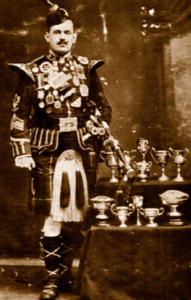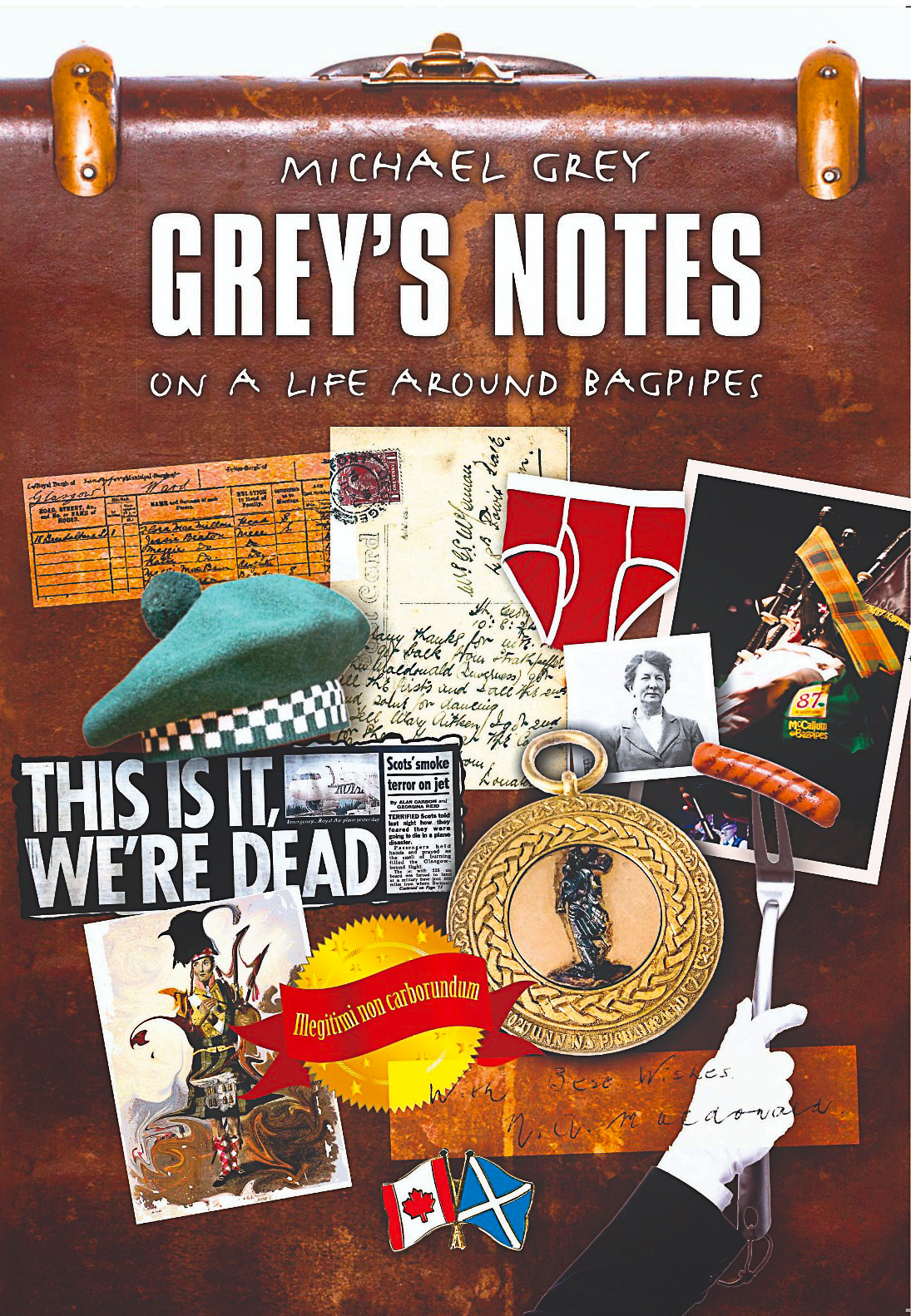D R MacLennan: Solo piping innovation in 1928!
December 31, 2022 on 2:18 pm by Michael Grey | In Music, Pipe Bands, Solo Piping, Video | Comments Off on D R MacLennan: Solo piping innovation in 1928!On the last day of the calendar year I offer a genuine curiosity: a recording of what is likely among the earliest recordings of the Great Highland Bagpipe played alongside other (non-bagpipe or percussion) instruments. This 78 RPM shellac (pre-vinyl) recording from 1928 stars a luminary from one of the great piping families of the last 200 years in Donald Ross (“D R”) MacLennan.

At the time of this project D R was 27 years old and had been a Pipe Major in the Seaforth Highlanders for four years. Between 1928 and 1932 the Seaforths made a series of bagpipe and military band recordings so there must have been a market – and, so, money to be made by someone.
This recording would have been ultra-acoustic, recorded off-the-floor with no multi-tracking or click tracks. That’s fairly evident in listening in on this digitsed version and the, er, notable increase in tempo in the rollicking reel, “De’il Amang the Tailors”.
I can easily imagine some hot sound stage with all musicians packed in doing their best to hang their parts together. In fact, by the final parts of the reel I can easily picture the band leader capitulating; standing in the studio in a pool of sweat, arms at his side with hair resembling Christopher Lloyd’s Dr Doc Brown in the Back to the Future movies.

This is a strange juxtaposition of tunes: The Highland Cradle Song, a syrupy sort of waltz composed, apparently, in 1847 by Louis-Antoine Julien, a French bandleader and composer living in London, in honour of Olga, Grand Duchess of Russia and Crown Princess of Wurtemberg. Note D R’s technical flair in his sounding of a High A tripling at the 16 second mark on the recording. The zero-to-sixty transition to the famous old reel is about forty beats per minute short of subtle. The tempo builds. And builds.
I’d have to think that there were no noisy dancers in the room. Surely not. The disruption to musicians and recording equipment – such as it was in those days – would be untenable. I can only assume that hoot and holler specialists were enlisted to augment the production (now there’s a job title for a business card).
Still, these productions were among those that mark their part in the evolution of the music of the Great Highland Bagpipe. The pipes with orchestral instruments would have been the height of innovation – if not audacity – a hundred years ago.
D R MacLennan and his fellow regimental musicians were on the vanguard. A good place to aim to be in my experience.
A Happy New Year to you when it comes your way.
M.
No Comments yet
Sorry, the comment form is closed at this time.
Dunaber is using WordPress customized and designed by Yoann Le Goff from A Eneb Productions.
 Entries and comments
feeds.
Valid XHTML and CSS.
Entries and comments
feeds.
Valid XHTML and CSS.


